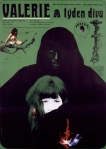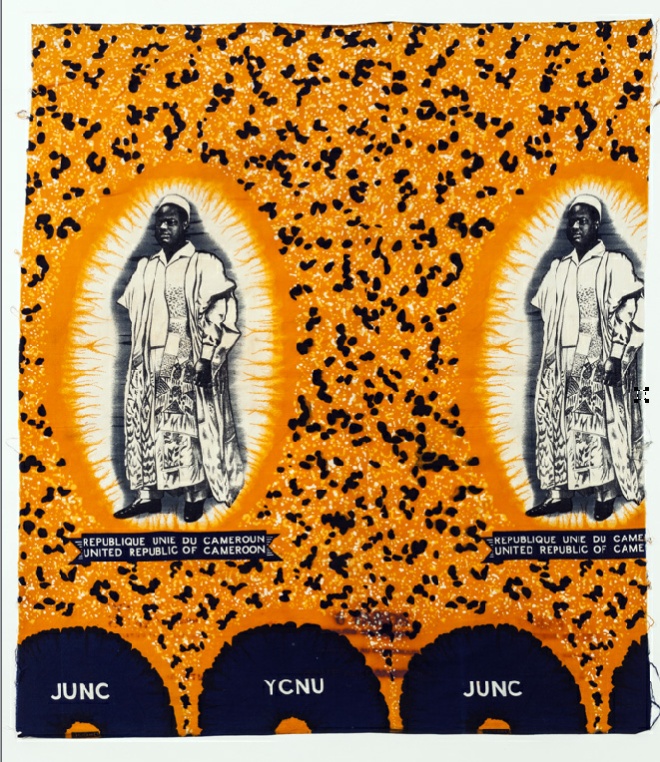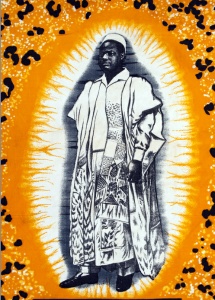As it’s Hallowe’en this weekend, it’s a great opportunity to highlight our extensive AV collections once more. Below are a dozen horror films we have in our collections; some well-known, some more obscure. If you fancy a scare this weekend, why not grab one of them?
Frankenstein (James Whale, 1931)
 One of the first horror films made by a major American studio, the iconic ‘Frankenstein’ adapts Mary Shelley’s original story but adds a heavy dose of German Expressionism, which was starting to influence Hollywood movies at the time (hence why we’ve not included ‘The Cabinet of Dr Caligari’ or ‘Nosferatu’ in the list!). 791.43714 FRA
One of the first horror films made by a major American studio, the iconic ‘Frankenstein’ adapts Mary Shelley’s original story but adds a heavy dose of German Expressionism, which was starting to influence Hollywood movies at the time (hence why we’ve not included ‘The Cabinet of Dr Caligari’ or ‘Nosferatu’ in the list!). 791.43714 FRA
Eyes Without A Face (Georges Franju, 1960)
 A quite astonishing French-Italian horror film that made censors and audiences nervous. A well respected and gifted surgeon is obsessed with restoring his daughter’s face, which was badly damaged in an accident, and will go to any lengths imaginable. Co-written with the writers of ‘Les Diaboliques’ (equally terrific) and ‘Vertigo’, its impact can be seen in its heavy influence on Almodovar’s ‘The Skin I Live In’. 791.43744 EYE/YEU (for English and French titles)
A quite astonishing French-Italian horror film that made censors and audiences nervous. A well respected and gifted surgeon is obsessed with restoring his daughter’s face, which was badly damaged in an accident, and will go to any lengths imaginable. Co-written with the writers of ‘Les Diaboliques’ (equally terrific) and ‘Vertigo’, its impact can be seen in its heavy influence on Almodovar’s ‘The Skin I Live In’. 791.43744 EYE/YEU (for English and French titles)
The Innocents (Jack Clayton, 1961)
 ‘The Innocents’ is a quite superb adaptation of Henry James’s ‘The Turn of the Screw’, a Gothic ghost story novella about a governess charged with looking after two strange young children. The psychological horror is subtle, mostly achieved through lighting and its black and white cinematography. as well as an early use of electronic sound, thanks to Daphne Oram. 791.43714 INN
‘The Innocents’ is a quite superb adaptation of Henry James’s ‘The Turn of the Screw’, a Gothic ghost story novella about a governess charged with looking after two strange young children. The psychological horror is subtle, mostly achieved through lighting and its black and white cinematography. as well as an early use of electronic sound, thanks to Daphne Oram. 791.43714 INN
Repulsion (Roman Polanski, 1965)
 Forget the initial ‘Swinging London’ clichés, Polanski’s film is a deeply unsettling account of a young woman’s breakdown. Catherine Deneuve is a shy Belgian manicurist living with her sister in Kensington, suffering from androphobia (the pathological fear of interaction with men). Polanski uses quite exquisite imagery and effects to depict her anxieties. 791.437 REP
Forget the initial ‘Swinging London’ clichés, Polanski’s film is a deeply unsettling account of a young woman’s breakdown. Catherine Deneuve is a shy Belgian manicurist living with her sister in Kensington, suffering from androphobia (the pathological fear of interaction with men). Polanski uses quite exquisite imagery and effects to depict her anxieties. 791.437 REP
Valerie and Her Week of Wonders (Jaromil Jireš, 1970)
 Based on a well known Czech novel of the same name (891.863 Ne on the shelves!), this strange horror film is inspired by fairy tales and Gothic fiction and was a big inspiration for the English writer, Angela Carter. It’s difficult to know where to start describing this film, but needless to say, its young heroine has to ward off vampires, priests and all sorts of oddballs. 791.437437 VAL
Based on a well known Czech novel of the same name (891.863 Ne on the shelves!), this strange horror film is inspired by fairy tales and Gothic fiction and was a big inspiration for the English writer, Angela Carter. It’s difficult to know where to start describing this film, but needless to say, its young heroine has to ward off vampires, priests and all sorts of oddballs. 791.437437 VAL
Don’t Look Now (Nicolas Roeg, 1973)
 This is one of the most acclaimed British films and horror films of all time. Based on a Daphne Du Maurier short story, Roeg uses a highly fragmented narrative including flashbacks and flash-forwards to increase the tension and sense of unease. A grieving couple who recently lost a child travel to Venice for the husband’s work, but find themselves caught up in a fatalistic chain of events. 791.43711 DON
This is one of the most acclaimed British films and horror films of all time. Based on a Daphne Du Maurier short story, Roeg uses a highly fragmented narrative including flashbacks and flash-forwards to increase the tension and sense of unease. A grieving couple who recently lost a child travel to Venice for the husband’s work, but find themselves caught up in a fatalistic chain of events. 791.43711 DON
Suspiria (Dario Argento, 1977)
 Now, this is a strange film. ‘Suspiria’ is the best known giallo, an Italian sub-genre of horror which usually features lots of violence and sex. A young American girl joins a well respected ballet academy in Germany and well….none of it really makes sense. However, it’s one of the most stylish films you could possible imagine. The use of colour is exceptionally vivid, the prog-rock score pounds your ears, the dubbing is um, interesting and the camera sweeps all over the place. Seriously recommended. 791.43714 SUS
Now, this is a strange film. ‘Suspiria’ is the best known giallo, an Italian sub-genre of horror which usually features lots of violence and sex. A young American girl joins a well respected ballet academy in Germany and well….none of it really makes sense. However, it’s one of the most stylish films you could possible imagine. The use of colour is exceptionally vivid, the prog-rock score pounds your ears, the dubbing is um, interesting and the camera sweeps all over the place. Seriously recommended. 791.43714 SUS
Dawn of the Dead (George A. Romero, 1978)
 Now you might be surprised that I didn’t choose the earlier, seminal horror film ‘Night of the Living Dead’ but I think ‘Dawn…’ still resonates with audiences now as it did then. Zombies have take over the US and society is on the verge of collapsing. A few survivors head to the only place that’s safe….the mall. The target here is consumerism and Romero is merciless in his satire. 791.43714 DAW
Now you might be surprised that I didn’t choose the earlier, seminal horror film ‘Night of the Living Dead’ but I think ‘Dawn…’ still resonates with audiences now as it did then. Zombies have take over the US and society is on the verge of collapsing. A few survivors head to the only place that’s safe….the mall. The target here is consumerism and Romero is merciless in his satire. 791.43714 DAW
Possession (Andrzej Zulawski, 1981)
 Now when I said ‘Suspiria’ was weird, watch ‘Possession’ to see what weird REALLY is. Set in Cold War Berlin, it follows a married couple (Sam Neill and Isabelle Adjani) who’re heading for divorce. He’s a spy (we don’t know who for), she’s having a breakdown. But when he meets his son’s teacher who’s the double of his wife and she takes a lover who’s erm, very different to Sam, then you’ll understand what I mean. There are no easy explanations for what any of this is about, but it’s superb. 791.43744 POS
Now when I said ‘Suspiria’ was weird, watch ‘Possession’ to see what weird REALLY is. Set in Cold War Berlin, it follows a married couple (Sam Neill and Isabelle Adjani) who’re heading for divorce. He’s a spy (we don’t know who for), she’s having a breakdown. But when he meets his son’s teacher who’s the double of his wife and she takes a lover who’s erm, very different to Sam, then you’ll understand what I mean. There are no easy explanations for what any of this is about, but it’s superb. 791.43744 POS
The Thing (John Carpenter, 1982)
 Again, I might be deliberately obtuse with some choices here (why not Carpenter’s ‘Hallowe’en – one of the most influential horror films of all time?), but ‘The Thing’ is terrific; one of those films that will unsettle you throughout….and for a long time after. A group of research scientists in Antarctica discover something not quite human, and it can take the form of any of them. Cue loads of paranoia and gore! 791.43714 THI
Again, I might be deliberately obtuse with some choices here (why not Carpenter’s ‘Hallowe’en – one of the most influential horror films of all time?), but ‘The Thing’ is terrific; one of those films that will unsettle you throughout….and for a long time after. A group of research scientists in Antarctica discover something not quite human, and it can take the form of any of them. Cue loads of paranoia and gore! 791.43714 THI
Braindead (Peter Jackson, 1992)
 Nowadays Peter Jackson is well known for directing the Lord of the Rings films. However back in the 80s and 80s he made some quite brilliant low budget horror films in New Zealand. Braindead is more comedy than horror, especially given that the home-made effects look somewhat well, home-made. A meek son lives with his dominant mother, but when she’s bitten by a rat-monkey, turns into a zombie and becomes contagious, he finds himself having to save Wellington from the zombie Apocalypse! 791.43714 BRA
Nowadays Peter Jackson is well known for directing the Lord of the Rings films. However back in the 80s and 80s he made some quite brilliant low budget horror films in New Zealand. Braindead is more comedy than horror, especially given that the home-made effects look somewhat well, home-made. A meek son lives with his dominant mother, but when she’s bitten by a rat-monkey, turns into a zombie and becomes contagious, he finds himself having to save Wellington from the zombie Apocalypse! 791.43714 BRA
Audition (Takashi Miike, 1999)
 Crikey, ‘Audition’ is one creepy movie. Once you’ve seen it, scenes from it will haunt you forever. A widowed film producer uses the audition process to find a new wife. In walks a shy and hypnotic young woman whom he immediately falls for her. However, when he digs deeper when finds that her CV doesn’t quite add up, but he pursues her nonetheless. Now what is in that sack? 791.43752 AUD
Crikey, ‘Audition’ is one creepy movie. Once you’ve seen it, scenes from it will haunt you forever. A widowed film producer uses the audition process to find a new wife. In walks a shy and hypnotic young woman whom he immediately falls for her. However, when he digs deeper when finds that her CV doesn’t quite add up, but he pursues her nonetheless. Now what is in that sack? 791.43752 AUD









